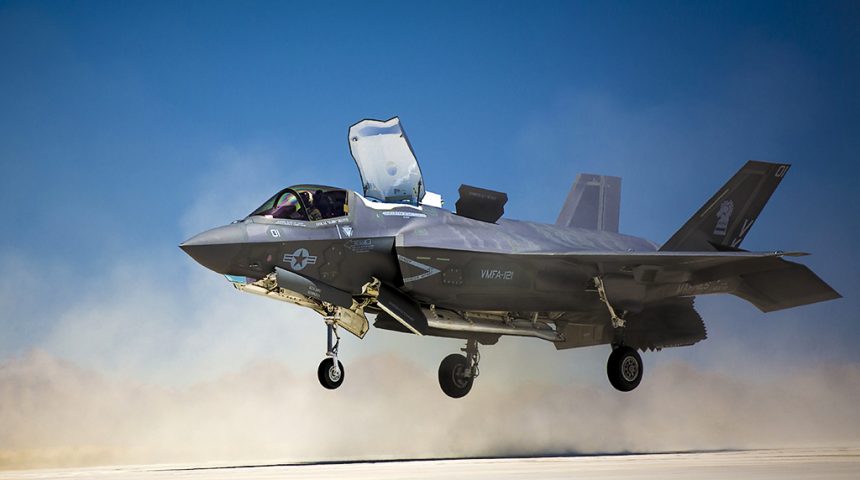The F-35 Lightning II Joint Program Office, in partnership with Lockheed Martin, achieved a major milestone in the path to dump the ALIS centralized support system and replace it with ODIN.
Initially considered to be one of the key systems of the 5th generation aircraft, ALIS (Autonomic Logistics Information System), the off-board “infologistic” system used for tracking and order spare parts, assess the health state of the aircraft, support maintainers through repair works and conduct mission planning for the global fleet, has become one of the most troubled F-35’s systems.
Plagued by several longstanding issues, prone to cyber attacks and afflicted by false alarms, long boot and update times, significant workload for the maintainers, delayed delivery of spare parts and poor inventory management, ALIS was an ambitious project that has eventually failed to meet the expectations.
So much so, earlier this year, the F-35 Joint Program Office announced that it would completely replace the Lockheed Martin-designed ALIS, with a new, more efficient and secure system: the Operational Data Integrated Network (ODIN).
ODIN is a cloud-native system that incorporates a new integrated data environment and a new suite of user-centered applications. According the F-35 JPO, it will be a significant step forward to improve F-35 fleet’s sustainment and readiness performance. The goal of ODIN is “to decrease F-35 administrator and maintainer workload, increase mission capability rates for all F-35 variants, and allow software engineers to rapidly develop and deploy updates in response to emerging warfighter requirements.”
In other words, ODIN is an “infostructure” designed to match the requirements coming from field, from the users, who need better interfaces and ease of management, to efficiently do their jobs. ODIN is going to implement more efficient communication flows, more edge processing and less centralization, so as to meet the requests of export customers, not too happy of sharing tons of sensitive information with the American manufacturer.
Unlike ALIS, intellectual property and data components of ODIN will be government-owned, not contractor-owned, and data sovereignty will not be an issue.
“Different from ALIS, ODIN is an F-35 Joint Program Office-led effort leveraging government and industry partners such as Kessel Run, the 309th Software Engineering Group, Naval Information Warfare Center, Lockheed Martin, and Pratt and Whitney,” said Lt Gen Eric Fick, F-35 Program Executive Officer in a public release. “ODIN will leverage the agile software development and delivery practices piloted by Kessel Run and investments by Lockheed Martin to better posture our F-35 fleet to increase and maintain a high readiness rate in order to meet its operational requirements.”
The plan is to have ALIS completely replaced and ODIN achieving FOC (Final Operational Capability) by December 2022. However, the first squadron is about to divorce from it already.
The first hardware for ODIN, was already delivered to U.S. Marine Corps Air Station (MCAS) Yuma, Arizona, where, on Sept. 29, 2020, Marines completed the loading of a single squadron of F-35Bs on the new modernized hardware. Later that day, the USMC flew the first flight supported by the new hardware and flew four more flights the following day. Interestingly, the new modern hardware is running also the most current version ALIS.
ODIN’s new hardware brings numerous improvements to ALIS. Immediately obvious is its reduced size. While existing ALIS servers comprise of a full person-height rack of electronics and require additional backup power modules, the ODIN-enabled hardware fits within two transportable cases – roughly the size of two pieces of carry-on luggage. This smaller ‘footprint’ also brings significant weight reduction – from more than 800 lbs. for an ALIS server, to two modules each weighing under 70 lbs. for ODIN.
ODIN hardware also brings significant performance improvements while running ALIS. Performance testing of ODIN showed a reduction in the administrative workload and significantly reduced processing times compared to fielded ALIS servers (>50% decrease) – reducing the maintainers’ workload by making system interactions quicker. The testing also demonstrated a significant reduction in the time required to configure the system for use in a new environment and transfer aircraft.
Although the test that validated the new ODIN hardware was successful, much will have to be done in the next months to complete the migration from the 20-year old ALIS to the new system. “Officials from the Office of the Director of Operational Test and Evaluation stressed that effectively transitioning from the current system to a future one will be particularly challenging for DOD given the need to continue sustaining the more than 400 aircraft that have already been fielded with current ALIS,” the GAO (Government Accountability Office), a Congressional watchdog stated in March 2020.









